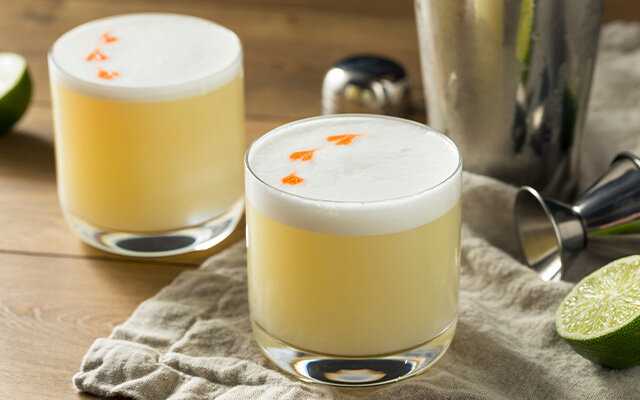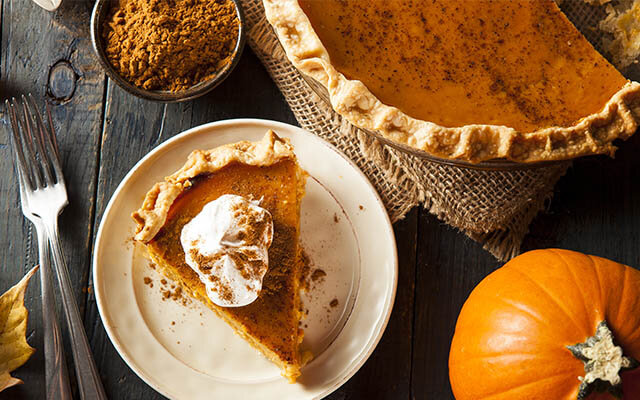Every bartender worth their salt knows that Angostura bitters are the must-have cocktail ingredient. There is just so much you can do with this incredibly versatile elixir, from crafting classic cocktails to cooking up a storm.
In this feature, we are taking a closer look at Angostura Aromatic Bitters, Angostura Orange Bitters and Angostura Cocoa Bitters to find out what makes them so special, including some useful tips for how to use Angostura bitters from Daniyel Jones, a multi-award-winning bartender and Angostura’s brand ambassador.
Here’s everything you need to know about Angostura Bitters!
What is Angostura bitters made of?
Made by the House of Angostura, Angostura bitters are a concentrated mix of high-proof alcohol, herb, spice and gentian (which is a blue-flowered herb of remarkable flavour).
Does Angostura bitters get you drunk?
All Angostura bitters are alcoholic at around 44.7% ABV. Therefore these bitters can indeed get you drunk, however, the intense flavour of the spices in the bitters makes them difficult to stomach on their own. Only a couple of droplets can transform your cocktails though!
Where is Angostura bitters made?
Angostura bitters are made on the island of Trinidad in the Caribbean.
They were first invented in Angostura, Venezuela, as a medicine for stomach ailments by Doctor Johnaan Siegert in the 1820s. In the 1870s Siegert’s three sons moved to Trinidad, where Carlos Siegert developed the iconic brand and where Angostura bitters are still being made today.
Speaking of the branding, why is the Angostura bitters label so big? Well, when it came to rebranding Angostura bitters, one of the three Siegert brothers designed the label while another designed the bottle.
The two brothers never consulted each other about dimensions while they were working on their designs and so they ended up with a label that was too big for the bottle.
On the advice of a branding expert, they chose to stick with the happy accident as a way to stick out from the crowd.
What does Angostura bitters taste like?
The House of Angostura now has three bitters in its range: Angostura Aromatic Bitters (the original), Angostura Cocoa Bitters and Angostura Orange Bitters.
They all share the same base of rich, complex spice flavours like cinnamon and clove but Angustrua Cocoa Bitters has chocolatey aromas added and Angostura Orange Bitters has warm citrus tones. Each one is as delicious as the next!
What is Angostura bitters good for?
There are so many fun, creative and utterly delicious ways that you can use this multifaceted ingredient. It is the perfect way to add spice notes to your favourite drink and food recipes, it turns your G&T pink and Angostura bitters are great for decorating the foam on your cocktails.
Discover some of our favourite ways to use Angostura Bitters below.
3 of the best things Angostura Bitters is good for:
Angostura bitters is good for making your G&Ts blush:
Angostura bitters were first used in the 1800s by sailors in the British Royal Navy as a way to improve the taste of their gin rations and help settle their stomachs.
To their delight, it not only enhanced the flavour of their gin it also added a sophisticated pinkish hue that we still love today.
“In an attempt to protect their stomachs, the sailors started adding Angostura Aromatic Bitters [to their gin], creating a cocktail called Pink Gin. Soon enough, the drink became fashionable and travelled around the world along with the British Navy. We’ve never changed the secret recipe of Angostura Aromatic Bitters to date, maintaining its authenticity and legacy.”
Why not try adding a dash or two of Angostura Aromatic Bitters to your G&T? You’ll end up with a long, refreshing tipple with an extra hit of flavour and a subtle rosy colour. You can also find a fabulous Pink Gin cocktail recipe at this link.
2. Angostura bitters is good for decorating your cocktails:
Besides being an integral cocktail ingredient, Angostura bitters make a fabulous garnish for gin cocktails with a foamy head, like a Clover Club or Gin Sour.
To make a heart pattern in the foam, take a cocktail straw and dip one end in your Angostura bitters, putting your thumb over the opposite end – the straw will hold the bitters until you remove your thumb.
Release the bitters over your foamy cocktail, making a line of four dots, decreasing in size, near the edge of your glass.
Take a cocktail stick and drag it through the centre of all four dots and voila, you’ve got a line of hearts!
Watch Craft Gin Club’s Master Mixologist, Maria Vieira, demonstrate how to use Angostura bitters to garnish your cocktails:
3. Angostura bitters is good for enhancing your foodie flavours:
Angostura bitters are a go-to for bartenders, but top chefs also find them useful in the kitchen.
Add around four dashes of Angostura Aromatic Bitters to good-quality vanilla ice cream for a deceptively simple yet delicious dessert or give our pumpkin pie recipe a go, it uses Angostura Orange Bitters to take its deliciousness to the next level - find the recipe by clicking right here!
If you’re feeling even more adventurous, head to angosturabitters.com/food-recipes for a whole host of sweet and savoury recipes that feature Angostura bitters, ranging from apple crisps to sun-dried tomato pesto.
What alcohol goes with Angostura bitters?
The alcohol that Angostura bitters was first mixed with is gin. It works fantastic with gin in a number of cocktails, including a Pink Gin and a Gin Sour. Both of these gin and Angostura bitters recipes can be found here!
Angostura bitters are also often mixed with whisky in an Old Fashioned cocktail or a Manhattan cocktail, in which the bitters work very well with vermouth too.
If you have ever tried a classic Dark & Stormy then you will know that Angostura bitters are also fantastic with rum and ginger beer.
What gins go best with Angostura bitters?
We asked Daniyel Jones which of Angostura’s bitters work best with which style of gin and he didn’t disappoint.
To go with Angostura Aromatic Bitters Daniyel recommends unique styles of gin, that use adventurous botanicals like lavender. Sounds like Wessex Saxon Garden Gin, Cotswolds Dry Gin or our herbaceous September 2021 Gin of the Month, Cotton Garden Gin, would be perfect!
“Angostura Aromatic Bitters bring out brighter botanical flavours in a gin and give cocktails a nice balance. Try them in a G&T and you’ll understand why we call Angostura Aromatic Bitters the salt and pepper of the bar.”
Image: House of Angostura.
Image: House of Angostura.
To go with Angostura Orange Bitters Daniyel suggests more traditional London Dry Gins. Two great examples would be Altitude Gin and Shortcross Classic Gin.
For Angostura Cocoa Bitters Daniyel recommends experimenting with your favourite gins as the flavour profile has those distinct and utterly divine chocolate tones that can work well anywhere, especially in a Tom Collins (we also love a couple of drops in an Espresso Martini)!
“Angostura uses Trinidadian cocoa beans from sustainable local farms and traditional artisanal techniques to create cocoa bitters with a rich authentic flavour. The result is an ingredient that brings a whole new dimension to your gin. I would recommend making a Tom Collins with your favourite gin and adding a couple of dashes of Angostura Cocoa Bitters. It will help you appreciate your gin on a whole new level.”
Image: House of Angostura.
Click here or on the image to find a great Tom Collins recipe then add a splash of Angostura Cocoa Bitters.






















 plus all of your
plus all of your
 See Bronze Benefits
See Bronze Benefits
 plus all of your
plus all of your
 See silver Benefits
See silver Benefits
 plus all of your
plus all of your
 See gold Benefits
See gold Benefits